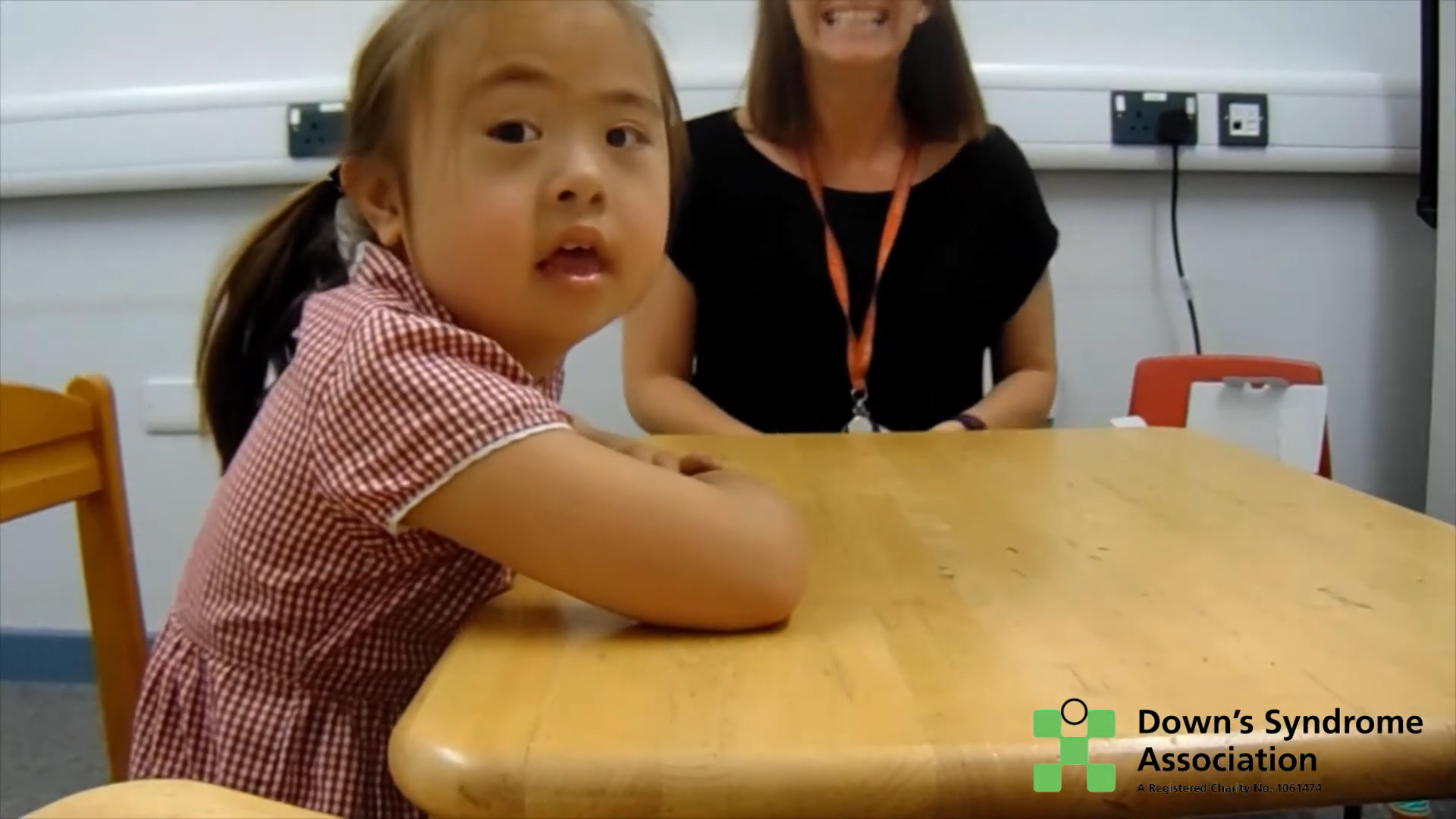Speech and Language Activities
Our Advanced Clinical Specialist Speech & Language Therapist, Gwendolina Toner, has created a series of videos demonstrating some activities that will help to develop speech and communication skills.
The activities are generally aimed at children, but there is no specific age range.

The ‘Hello’ Song
The ‘Hello’ song is very important because it provides a clear cue to the child that the learning session is beginning, and helps the child to feel welcome, special and included.
It can also make the structured learning environment feel fun and accessible, and can encourage the child’s confidence.
Turn taking activity
Many children benefit from opportunities to practise taking turns. This skill is the foundation of communication and developing friendships.
It supports our children’s attention span and understanding of language, as well as their ability to participate, share, wait, make choices, anticipate, negotiate, play games and solve problems. Turn taking also promotes independence, self regulation and general awareness.
Taking turns with a physical object makes turn taking very concrete and visible.
Identifying Facial Expressions
It’s very important that our children learn to recognise their own and other people’s feelings, and to link feelings with experiences. Teaching emotion words works best in the context of everyday life.
You can label and sign feelings (such as happy, sad, cross, excited, frustrated, disappointed) when your child or another person is experiencing the emotion.
In this film, Gwen works with Selma to identify four feelings by facial expression, and then begin to link a feeling to an experience.
Turn taking
We are frequently asked which toys and games families should buy to support their children’s language skills at home. There are many fantastic resources available, but the most simple toys can be very effective and are often the most versatile.
In this clip, Selma and Gwen are playing together with a squeaky pig toy. We are using this simple toy to practise engagement and attention, turn taking, making choices, copying, following simple instructions, and understanding and saying a range of language concepts (on, up, down), body parts, counting, some early verbs (jump, sleep, help), and animal sounds.
Simple Instruction in Sequence
This film shows Selma working on a number of skills, including turn taking, waiting, sequential thought, and using language to give instructions in sequence. She is working on understanding and using the concepts ‘up’, ‘down’, and ‘top’, and she is beginning to understand the question ‘who?’ and negatives (e.g. ‘hasn’t’).
Selma is also working on saying the consonant sounds ‘p’ and ‘k’ at the end of single syllable words (e.g. ‘up’, ‘top’, ‘stop’, ‘peck’, ‘pink’, ‘shake’). She is practising some fine motor skills including isolating her thumb and using a pincer grip.
Speech Sound Activity
Selma is working on speech sounds while incorporating a range of other skills into the same activity. She is working on saying sounds at the end of words. The words have been chosen because they are functional and are included in her vocabulary targets.
You will see that Selma is practising turn taking, and that her teaching assistant and our Speech and Language Therapist take the first two turns so that the targeted skill has been modelled twice before Selma takes her turn.
We are also working on making choices, naming colours, using the concept ‘first’, and understanding negatives (e.g. ‘haven’t’). The buzzers in the activity are great fun, and we use them as rewards/reinforcers for a variety of speech sound activities, as well as a range of other learning tasks!
Composite Activity
This film shows Selma participating in a composite activity that targets a number of skills. We call this a ‘language immersion’ activity.
You will see Selma practising waiting, listening, anticipating, making choices, and turn taking skills. As usual, Selma takes the third turn so that the task has been modelled for her twice before she is asked to take part.
The activity incorporates feelings/emotion words and food vocabulary, as well as body part vocabulary and isolating the thumb (a pre-pencil grip skill). We are also working on understanding and using short spoken phrases, and using signs and sentence starters to prompt spoken language.
Selma is learning language concepts such as first, big/little, quick/slow, high/low; and prepositions such as in, on, under, behind. She is working on understanding and saying verbs, including eat, drink, jump, swing, sleep, fly.
The activity incorporates counting, ‘semantic links’ (what goes together? – ‘yogurt and spoon’) and syllable clapping. Selma is also practising short term visual memory skills (remembering what she has seen) and auditory memory skills.
Bubble Activity
Blowing bubbles can help to calm your child and help her to become more regulated. It may help your child to focus, pay attention, and to be more organised.
In this film, Selma is working on making choices, taking turns, and understanding and using the concepts ‘big’ and ‘little’. She is also working on sequential thought, and using ‘first/next’ to promote motivation and positive behaviour as well as expressive language.
Blowing bubbles supports the development of the oral motor skills needed for clear speech, including lip rounding, tongue retraction, and controlled elongated airflow.
Using bubble blowing as the final activity communicates to the child that the session is coming to an end. Following the activity, you can ask the child to ‘clean up the bubbles’ on the table, using a sterilising wipe (particularly important at the moment!). We can include additional language concepts, such as talking about the table’s shape, finding the ‘corners’ and ‘legs’, wiping ‘quick’ or ‘slow’, etc.
The large arm movements involved in wiping the table’s surface can calm the child, which will help her to transition to the next environment or activity.
We Can help
If you have any questions about social care, please contact us using Tel: 0333 1212 300 or Email: info@downs-syndrome.org.uk. If our information officers are unable to help, they will refer you to our social care adviser. We can help you by writing letters, requesting assessments, and formulating complaints.
